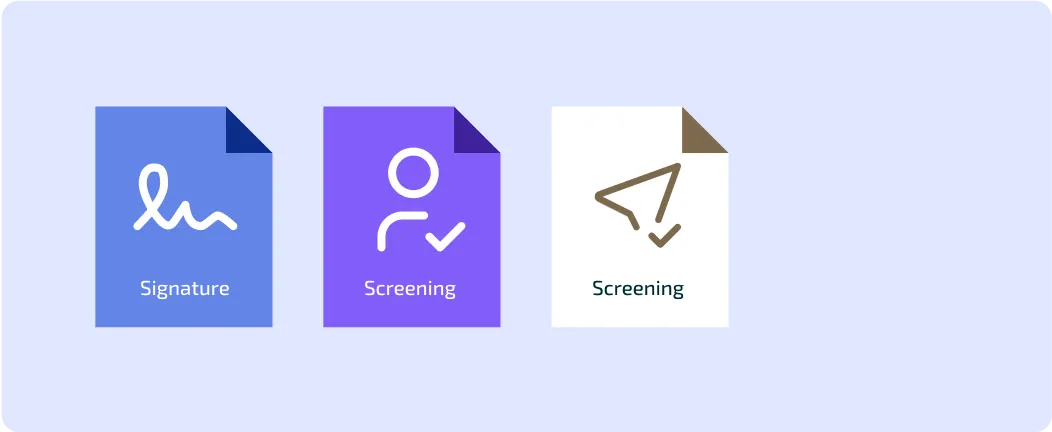.webp)
Published on
June 24, 2025
What is Bank Fraud? Key AML Compliance Measures
.png)
Accelerate AML Compliance: Meet Regulatory Demands with 80% Less Setup Time
.svg)
.svg)
Bank fraud involves using dishonest methods to steal money or assets from a bank, often through activities like forging documents, misrepresenting information, or identity theft. In the context of Anti-Money Laundering (AML), banks must take steps to prevent fraud by detecting and stopping these activities. AML programs help banks identify suspicious behavior, ensuring they do not unknowingly participate in money laundering or financial crimes.
Also, AML programs, including Know Your Customer (KYC) processes and transaction monitoring, help banks detect unusual activities. These systems flag potential fraud, ensuring banks can investigate before a crime is committed.
Types of Bank Fraud:
- Account Takeover: Stealing access to a customer’s account.
- Cheque Fraud: Using fake or stolen cheques.
- Loan Fraud: Lying about financial information to get a loan.
- Credit Card Fraud: Using stolen or fake credit cards.
- Identity Theft: Impersonating someone else to access funds.
- Mortgage Fraud: Providing false information to secure a mortgage.
Example:
XYZ Bank is reviewing a business account application from Global Imports Ltd., a company that claims to import electronics. The bank runs the usual checks as part of their AML compliance process.
Step-by-Step Breakdown:
1. Client Onboarding
Global Imports Ltd. provides necessary documents like financial statements and tax records. The bank's compliance team starts checking these documents.
2. Suspicious Activity Detected
The bank’s transaction monitoring system flags Global Imports for unusual wire transfers to offshore accounts in high-risk countries.
3. Enhanced Due Diligence (EDD)
The compliance team looks deeper into the business and finds that the company has submitted fake invoices to get large amounts of credit and is hiding the real purpose of the transactions.
4. Fraud Identified
The team discovers that Global Imports Ltd. misrepresented its business to get a loan, making it a case of loan fraud.
5. Action Taken
The bank freezes the account and files a Suspicious Activity Report (SAR) with authorities.
Key Takeaways:
- Bank fraud includes faking documents or providing false information to access funds illegally.
- AML compliance programs, such as KYC and transaction monitoring, are essential for detecting fraud.
- Enhanced Due Diligence (EDD) helps the bank investigate suspicious activities more thoroughly.
- Filing a Suspicious Activity Report (SAR) helps authorities investigate and prevent further crimes.
Streamline Compliance: Achieve 80% Faster Setup for Fraud Prevention
.svg)
.svg)

How Aseel reduced onboarding time by more than 87% using FOCAL
Learn how FOCAL empowered Aseel to achieve new milestones.


Mastering Fraud Prevention: A Comprehensive Guide for KSA and MENA Businesses
51% of organizations fell victim to fraud in the last two years, don't be caught off guard, act proactively.


Featured blog posts

.png)
What is Bank Fraud? Key AML Compliance Measures
Explore how AML programs help detect and prevent bank fraud by monitoring transactions, verifying identities, and reporting suspicious financial activity.
.webp)
.png)
What is Bank Fraud? Key AML Compliance Measures
Explore how AML programs help detect and prevent bank fraud by monitoring transactions, verifying identities, and reporting suspicious financial activity.
.webp)
.png)
What is Bank Fraud? Key AML Compliance Measures
Explore how AML programs help detect and prevent bank fraud by monitoring transactions, verifying identities, and reporting suspicious financial activity.
.webp)





AI-Driven Precision in Fraud Risk and AML Compliance



.svg)
.png)





.svg)

_FastestImplementation_Small-Business_GoLiveTime.png)

_HighPerformer_Small-Business_HighPerformer.png)
_Leader_Leader.png)



%20(1).webp)